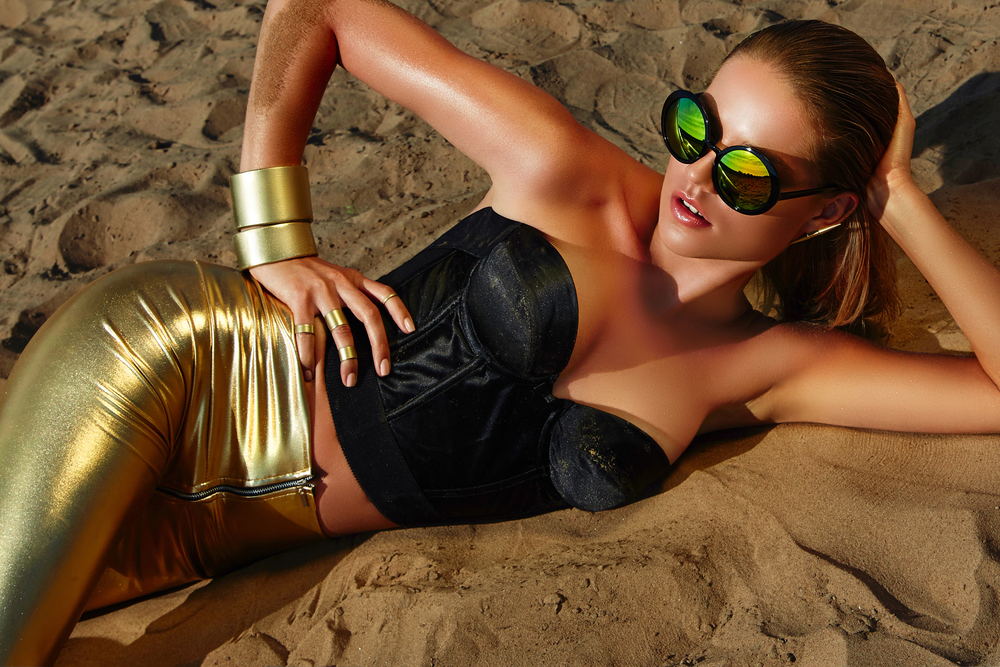
Mastering the Art of Modeling: Unveiling Success Secrets and Industry Insights
Mastering the Art of Modeling: Unveiling Success Secrets and Industry Insights

The world of modeling is often seen as glamorous and attractive. From high fashion runways to magazine covers, the modelling industry has captivated people's attention for decades. However, behind the scenes lies a highly competitive and challenging world that requires dedication, hard work, and a deep understanding of what it takes to succeed. In this article, we will delve into the art of modeling, unveiling the secrets to success and providing valuable insights into the industry.
Understanding the Art of Modeling
Modeling is an art form that involves showcasing fashion, beauty, and various products through photographs, videos, and live presentations. Models act as a canvas, bringing life to the designer's creations and allowing consumers to visualize how they would look or feel while wearing or using a particular product.
To become a successful model, it is crucial to understand the different aspects of the art of modeling. These include mastering various poses, expressions, and movements that effectively communicate the desired message. A deep understanding of fashion, trends, and the target audience is also essential to connect with the audience and convey the designer's vision.
Enrolling in Modeling Schools and Workshops
One of the first steps aspiring models often take is to enroll in modeling schools or workshops. These institutions provide valuable training and guidance to individuals who wish to pursue a career in the industry. Through these programs, models can learn the technical aspects of modeling, such as walking the runway, posing in front of the camera, and building their own brand.
Modeling schools and workshops also offer an opportunity to network with industry professionals. Experts in the field, ranging from photographers and designers to casting directors, often lead these programs. Building connections and relationships with these individuals can open doors to future opportunities and provide valuable industry insights.
Developing a Strong Portfolio
A model's portfolio is their most powerful tool. It is a carefully curated collection of their best work, showcasing their versatility, uniqueness, and ability to bring life to various concepts and styles. Every aspiring model should invest time and effort into creating a visually stunning portfolio that reflects their talent and potential.
When building a portfolio, it is important to work with professional photographers, stylists, hair, and makeup artists. Collaborating with experienced industry professionals elevates the quality of the images and demonstrates a model's ability to work in a team, which is crucial in the modeling industry.
Networking and Finding the Right Agency
Networking plays a crucial role in the success of any aspiring model. Attending industry events, fashion shows, and even using social media platforms can help models connect with photographers, designers, and other industry professionals. It is through these connections that models can often find representation by top modeling agencies.
Finding the right agency is a vital step on the path to success. A good agency will provide models with opportunities, guidance, and support, helping them secure contracts and projects. It is essential to research and approach reputable agencies that have a proven track record of launching successful careers.
Maintaining a Healthy Lifestyle
The modeling industry places immense importance on physical appearance. While it is crucial to maintain a fit body that meets industry standards, it is equally important for models to prioritize their overall health and well-being. A balanced diet, regular exercise, and a healthy mindset are all essential components of a successful modeling career.
Models should remember that the industry tries to promote diversity and inclusivity. It is crucial not to fall into the trap of comparing oneself to others or succumbing to unrealistic beauty standards. Embrace individuality and focus on building a strong, resilient mindset that can withstand the pressures of the industry.
Frequently Asked Questions:
1. How tall do you have to be to become a model?There is no standard height requirement in the modeling industry, as different types of modeling have different expectations. Many fashion models are around 5'9" to 6'0", while commercial and plus-size models can vary in height.
2. Can anyone become a model?
Yes, anyone can become a model regardless of age, race, or body type. The industry now emphasizes diversity and inclusivity, and there are opportunities for everyone.
3. Do I need professional photographs for my portfolio?
Yes, having professional photographs in your portfolio is essential. It showcases your professionalism and gives a true reflection of your potential as a model.
4. How do I find modeling agencies?
Research reputable modeling agencies online or through industry networking events. You can also reach out to established models or photographers for recommendations.
5. Can I balance modeling with my studies or other commitments?
It can be challenging to balance modeling with other commitments, but with proper time management and support, it is possible. Communicating your availability and limitations upfront is crucial to finding the right balance.
Mastering the art of modeling requires continuous learning, dedication, and navigating the intricacies of the industry. By understanding the different aspects of modeling, building a strong portfolio, networking, finding the right agency, and prioritizing self-care, aspiring models can pave their way to a successful and fulfilling career in the fashion industry.
Other useful resources
- https://en.wikipedia.org/wiki/Category:Modeling_(profession)
- https://en.wikipedia.org/wiki/Category:Modeling_agencies
- https://en.wikipedia.org/wiki/Category:Models_by_modeling_agency
- https://www.planetmodelphoto.com/models/modeling/usa/charlotte/nc-north-carolina